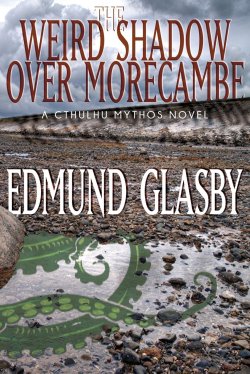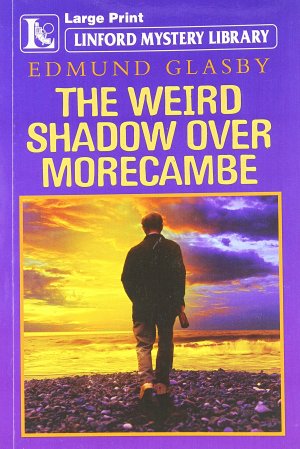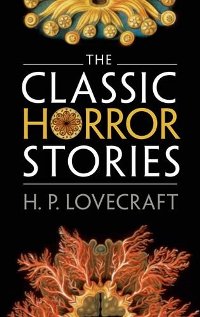Note: Post the appalling news from America, we in the close-knit Papyrocentric community feel this is a highly appropriate moment to re-publish this searing indictment of racism, hate and Other-phobia first issued in 2005 by the literary activist Dr Nigel M. Goldbaum (who is, of course, the life-partner of longstanding Papyrocentric favorite Dr Miriam B. Stimbers).
Faut-il Brûler Smith? (Con)futing the Hate Speech of Klarkash-Ton
by Dr Nigel M. Goldbaum
The Other is a liminal mirror in which we see reflected nothing other than the faces, distorted with rage, fear, and doubt, of the sentries patrolling the ambiguous and disputed frontiers of the Self. — Michel Foucault.
In terms of key issues maximally impacting committed members of the equality-activist community in the opening decade of the twenty-first century, there can be little doubt that the keyest is the confrontation with hatred of the Other. Be it in the form of antisemitism, racism, xeno-, gyno-, homo-, and/or lesbophobia, Other-directed prejudice and bigotry is a feral cancer whose seething tentacles cement a visceral shadow as much over the future of western societies as over their past. Yet members of the literary-scholarship community find that their field of critical and theoretic focus, one of the principal means of leveraging progressive ideas/attitudes in terms of the body (socio-)politic, often proves a double-edged discourse.
In short, and to be blunt, many past writers/authors were vicious bigots and/or racists. Nor are participants in “fringe” genres such as Weird fiction, themselves marginalized by mainstream literary discourse, innocent of an identical charge. Members of the Internet community, whether knowingly or unknowingly, can access the following on the Eldritch Dark, the premier web-resource devoted to maximalizing engagement with the literary legacy of Clark Ashton Smith, a core member of the seminal 1920s/1930s Weird Tales literary community:
The vermin is a very Jew, and will have his last ounce of brain and marrow.1
I return the Ullman-Knopf communication herewith. Knopf should remove the Borzoi from his imprint, and substitute either the Golden Calf or a jackass with brazen posteriors. I wish Herr Hitler had him, along with Gernsback.2
Antisemitism, arguably the most feral of all Other-phobic discourses, is a pivotal strand in the fluidic œuvre of Clark Ashton Smith (1893-1961), a California poet/author now arguably most famous for his association with New England author/poet H.P. Lovecraft (1890-1937) and Texas writer/author Robert E. Howard (1906-36). Lovecraft’s and Howard’s own and more obvious Other-phobia has been the epicenter of an unswerving critical dissection for a not inconsiderable time-period post the Civil Rights era/epoch, and I would suggest that Smith’s less obvious but arguably, for that very reason, even more pernicious Other-phobia has fallen into the penumbra cast by the brickbats rightly focused around Lovecraft and Howard. The present essay is an attempt, however tentative, inchoate, and embryonic, to corrective this situation and foreground the urgent need for unacceptable components/elements of Smith’s literary/epistolary output to be engaged on multiple levels by committed members of the anti-racist community.
Accordingly, I shall interrogate the conte fantastique by which arguably more than any other the feral parameters of Smith’s visceral Other-phobia can be mapped and/or charted: “The Black Abbot of Puthuum” (1936). Experienced literary exegetists need engage with no more than the title of this fictive discourse prior to commencing a deconstruction of its probable Other-phobic narrative strategies. We confront not ‘simply’ a chromatically unmarked “The Abbot of Puthuum,” nor a chromatically ‘neutral’ “The Red/Yellow/Blue Abbot of Puthuum,” but “The Black Abbot of Puthuum,” and the title immediately and explicitly conjuncts the racial Other of socially constructed Blackness with the textual Other of fictively constructed “Puthuum,” a factitious confection of visceral vocables nevertheless harboring feral echoes of “putridity-putrescence-putrefaction.”
Who could doubt, prior to embarking around a full engagement with Smith’s core narrative structure, that “The Black Abbot” will prove ‘Black’ by both socially constructed race but also by ideologically constructed nature, reinforcing/buttressing traditional Other-phobic discourses whereby Blackness is insolubly conjuncted with notions around soi disant ‘deviance’ and ‘criminality’? It comes as no surprise, then, for the attentive lectrice/lecteur, post reading-commencement, to confront the following literary tropes within the central core segment of the narrative proper:
The black man grinned capaciously, showing rows of discolored teeth whose incisors were like those of a wild dog. His enormous unctuous jowls were creased by the grin into folds of amazing number and volume; and his eyes, deeply slanted and close together, seemed to wink perpetually in pouches that shook like ebon jellies. His nostrils flared prodigiously; his purple, rubbery lips drooled and quivered, and he licked them with a fat, red, salacious tongue before replying to Cushara’s question.3 (Emphases mine.)
We see here an ‘optimal’ conflation of feral Other-phobic narratives of race whose visceral impaction on the reader is rather increased than lessened by the formalism of Smith’s conflicted, eurocentric prose. Indeed, we note that the Abbot becomes not merely the racial Other but the mammalian Other: his dentition is that of a “wild dog,” not that of a human being, and the sexual components of the ‘discourse of deviance’ long woven by white Other-phobes around members of the Black community are signalized in the “fat, red, salacious tongue” with which the Abbot animalistically “licks” his “purple, rubbery lips.” Soon post this passage, the Abbot’s unbridled Other-sexuality is further emphasized/foregrounded as he becomes not merely the mammalian but the vertebral Other:
Neither he nor Zobal was reassured by the look of lust in the abbot’s obscenely twinkling eyes as he peered at Rubalsa. Moreover, they had now noted the excessive and disagreeable length of the dark nails on his huge hands and bare, splayed feet: nails that were curving, three-inch talons, sharp as those of some beast or bird of prey. (Emphases mine.)
His visceral Otherness has become too ferally impactive to be confined within the anatomic/behavioral parameters of the class Mammalia (mammals) and is transferred even further, to those of the class Aves (birds). The Abbot’s subsequent attempts to both rape Rubalsa, the “queenly maiden” around whose non-consensual purchase and sex-trafficking the narrative centers, but also to murder and devour her ‘protectors’ are further cementings of Other-phobic racist discourses of Black promiscuity, violence, and cannibalism.
The multiply-stranded question that is begged by even a cursory interrogation of the soi disant “Black Abbot” is identical, mutatis mutandis, to that raised by French philosophe / critic / cultural commentatrice Simone de Beauvoir (1908-86) in a key mid-twentieth-century text of theoretic and societo-literary engagement: the essay «Faut-il Brûler Sade?» (1951), or “Must We Burn de Sade?”. Here I ask «Faut-il Brûler Smith?» (2005), or “Must We Burn Smith?”. That is, is our objective of a progressive, egalitarian society in which the optimally-diverse value and contributions of all are of equal worth and standing maximally advanced by a visceral suppression of such feral tropes in the work of such writers/authors as Clark Ashton Smith?
Or must we seek another — and indeed anOther — means of transitioning key societal components to our desired post-racist, post-white-hegemonic end(s)? Attractive though the strategy of suppression must appear to those members of the progressive community who fully recognize the dangers of such hate speech, it is nevertheless incumbent on us to engage with issues around pragmatism and acknowledge the impossibility, at the present stage of societal evolution, of successfully fruitioning such a strategy.
Instead, we must adopt the strategy of confrontation and confutation, theorizing/triangulating Smith within the poly-dimensional temporal, societal, and ideological co-ordinates/parameters of his fluidic, polymorphic fictive and meta-cultural identities/personae and explicating, if by no means excusing, his profoundly regrettable co-optioning of Other-phobic discourses of antisemitism and racism.
Notes
The following CAS texts and letter can be found online at The Eldritch Dark.
1. “The Corpse and the Skeleton.”
2. Letter to H.P. Lovecraft, c. mid-October 1933.
3. “The Black Abbot of Puthuum.”
© 2005 Nigel M. Goldbaum



